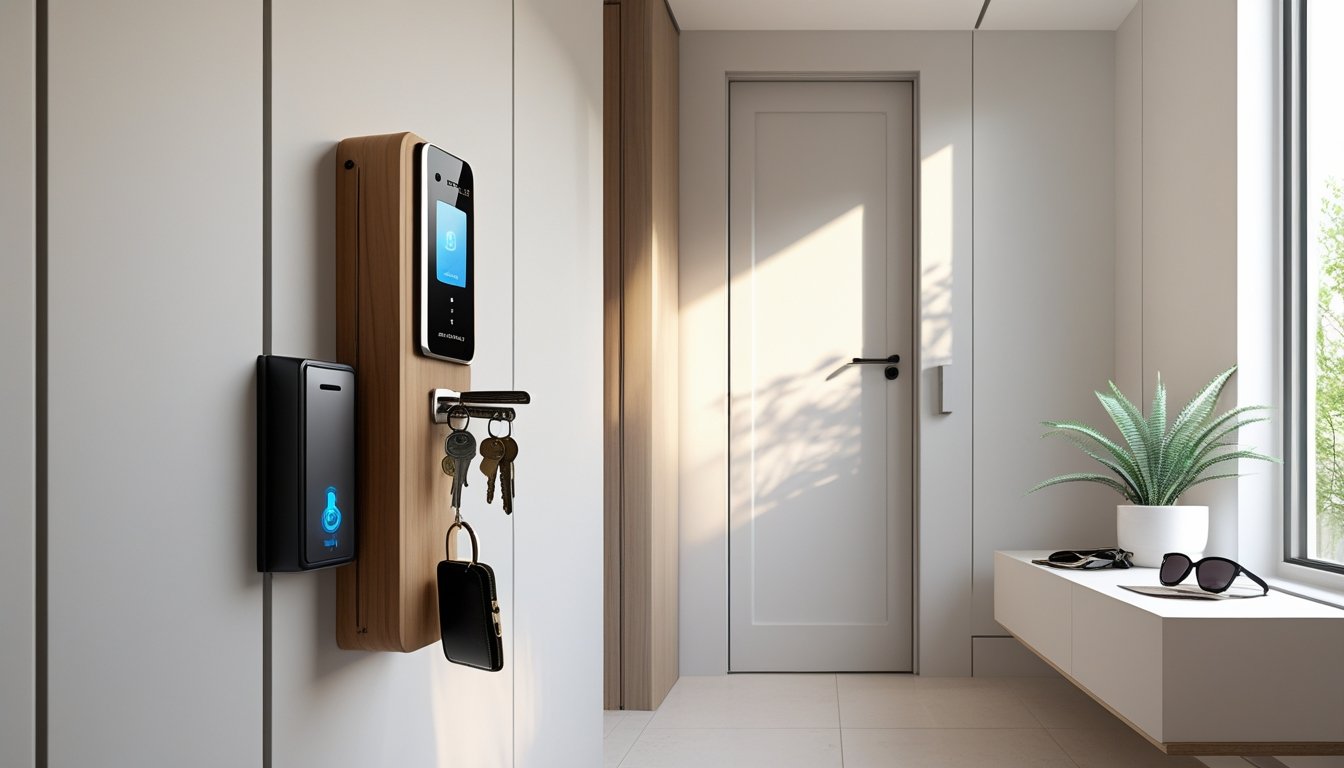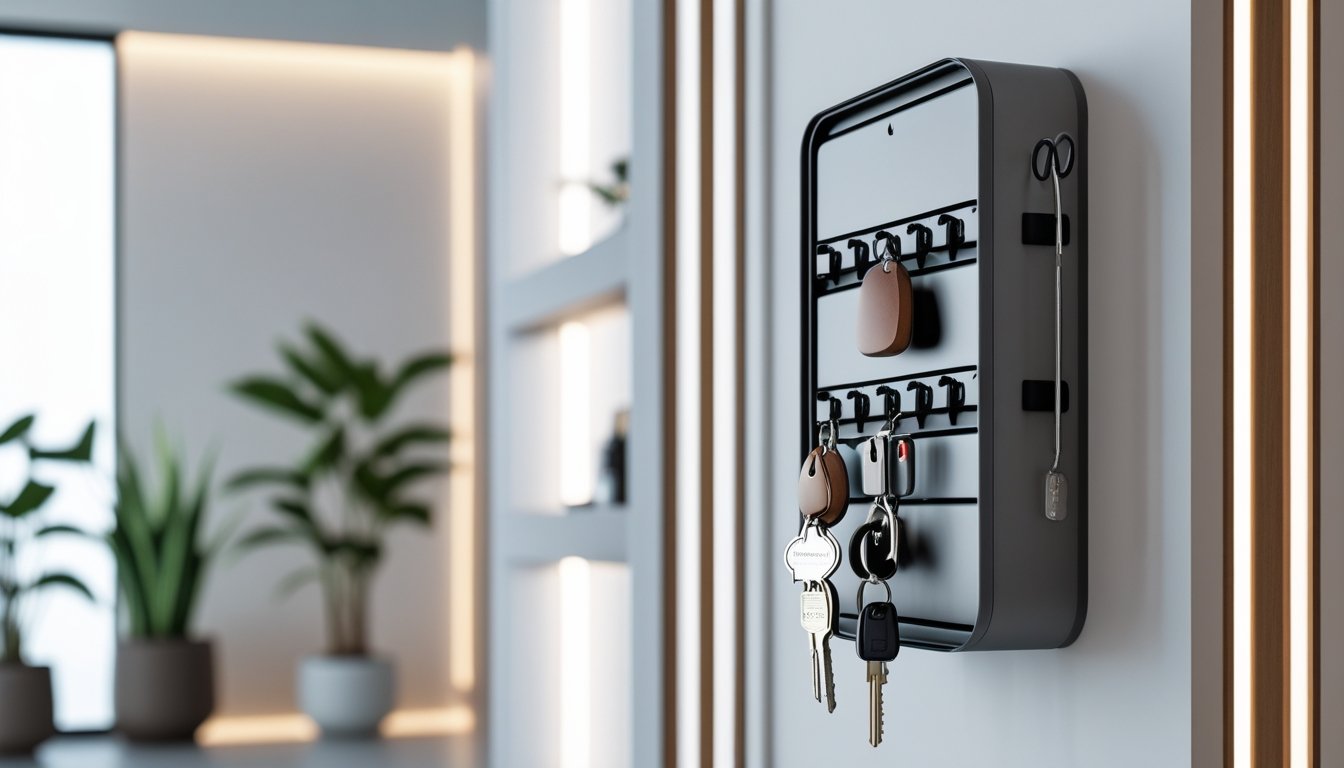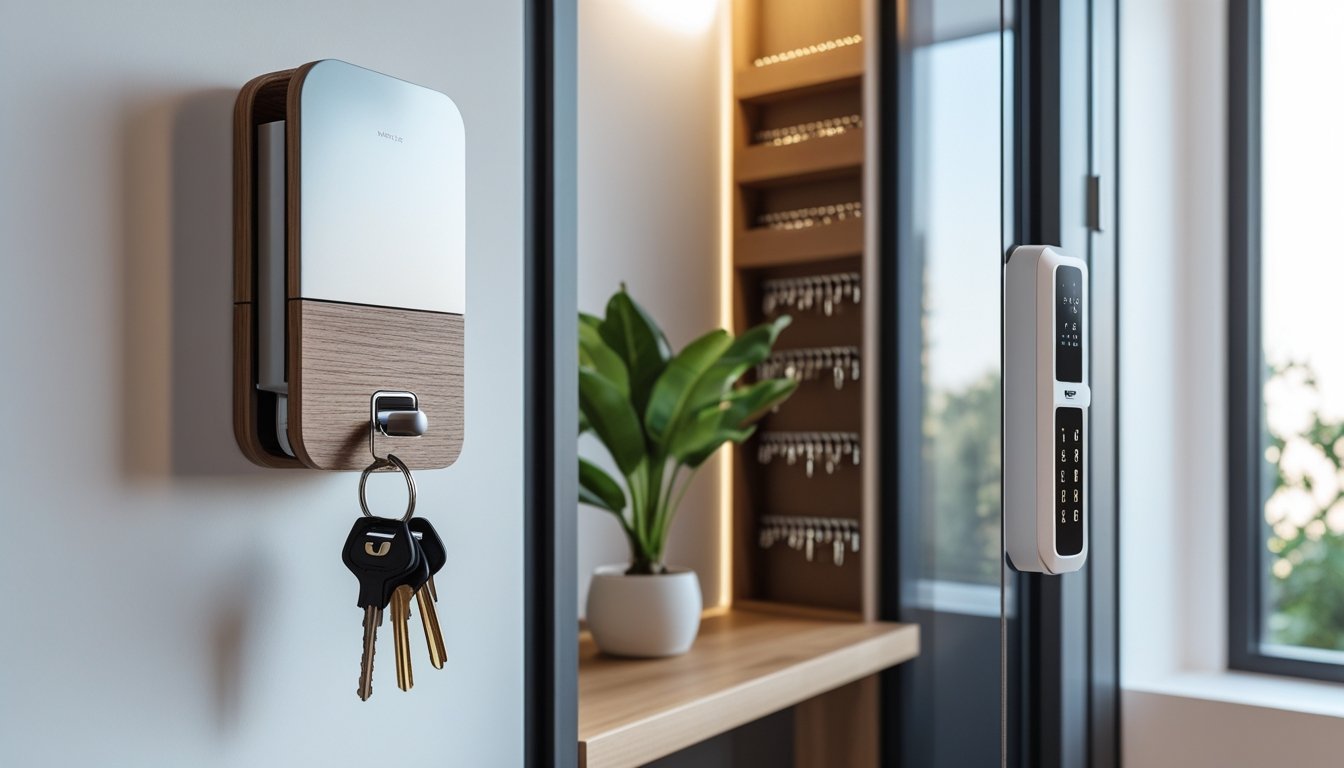Late updated: 07 Oct 2025 15:10
Written by: Elena Prescott
Innovative Key Storage Solutions for Modern Homes: Enhancing Security and Convenience
In today's modern homes, innovative key storage solutions are not just about convenience; they combine functionality with style, elevating both security and design. Many homeowners overlook the potential of efficient key storage, yet it plays a crucial role in maintaining an organised and clutter-free living space. From sleek, wall-mounted key cabinets to hidden compartments that seamlessly blend into home decor, there are a myriad of options that cater to diverse needs and aesthetic preferences.

Our journey into the world of key storage reveals how intelligent designs not only save space but also offer a touch of elegance and practicality. By integrating multi-functional furniture and exploring vertical space, we can enhance both utility and appearance in our homes. Creating a harmonious balance between form and function, these solutions promise to change the way we interact with everyday objects.
The emphasis on modern design also means that key storage solutions no longer have to be purely utilitarian. Now, they can be a seamless part of our interior aesthetic, matching the sophistication of our living spaces. Whether through the use of cutting-edge materials or clever placement, today's key storage solutions offer countless opportunities to keep our homes orderly and stylish.
Key Takeaways
- Key storage combines security with aesthetic appeal.
- Innovative designs help in saving space while adding elegance.
- Modern solutions blend with home interiors seamlessly.
Key Innovative Key Storage Solutions for Modern Homes
Our exploration of key storage solutions for modern homes involves a look at hidden compartments, vertical strategies, secretive furniture designs, and the adaptability of modular systems. These elements come together to transform and optimise living spaces.
Hidden Storage Compartment Ideas
Hidden storage compartments are perfect for maintaining a tidy aesthetic while ensuring security and accessibility. We often find these cleverly concealed areas in places like staircases and under flooring.
Incorporating hidden storage in kitchen islands or within upholstered furniture allows us to cleverly hide essentials. Custom built-ins with pull-out panels make it easy to store items out of sight. Transforming otherwise unnoticed areas into storage spaces offers practical solutions without disrupting design harmony.
Smart Vertical Storage Strategies
Utilising vertical storage can revolutionise our use of space, especially in compact homes. By extending storage upwards, we can make efficient use of walls and corners that often remain underutilised.
Implementing smart storage solutions means installing wall-mounted shelves, hooks, or cabinets that keep belongings organised yet accessible. Ladder shelves and tall bookcases can also serve dual purposes as decorative and storage pieces. Vertical strategies maximise spatial efficiency while keeping floors uncluttered.
Furniture with Secret Compartments
Furniture designed with secret compartments provides both functionality and intrigue. Coffee tables with lift tops or drawers, beds with built-in drawers, and sofas with hidden sections can significantly add to our storage options.
Such designs not only make furniture with secret compartments practical but also ensure our living spaces remain orderly. They enable easy access to stored items while maintaining a clean look. Incorporating these pieces into our homes adds a dual function—style and storage.
Modular Storage Systems for Flexibility
Modular storage systems offer flexibility and adaptability, allowing us to customise storage solutions as our needs change. These systems include stackable boxes, adjustable shelves, and reconfigurable units that promote efficient organisation.
With modular systems, we can easily adapt to shifting requirements. Whether requiring extra shelving or a different configuration, these systems offer a dynamic approach to storage. Their adaptability ensures they blend seamlessly with our home’s aesthetic while providing innovative storage solutions tailored to the demands of modern living.
Design-Led and Space-Saving Approaches

To create a modern home that's both functional and stylish, we focus on integrating storage seamlessly into the design and making use of clever solutions like floating shelves and hanging organisers. By doing so, we maintain a clutter-free environment without sacrificing aesthetic appeal.
Integrating Storage with Interior Design
Incorporating storage into the essence of interior design allows us to maintain clean, open spaces. Carefully designed furniture that combines storage possibilities within its framework is a great choice. For example, benches with hidden compartments or coffee tables with drawers serve dual purposes, enhancing usability while retaining elegance.
Design tips:
- Opt for materials that complement your home’s décor, such as natural woods or sleek metals.
- Consider furniture in neutral tones, which blends seamlessly with various styles.
This approach ensures that storage becomes part of the décor, not an afterthought. By blending function with design, we achieve spaces that are both liveable and aesthetically pleasing.
Utilising Floating Shelves and Hanging Organisers
Floating shelves and hanging organisers are excellent solutions for maximising wall space and adding visual interest. These can be strategically placed around the home to keep items off the ground, freeing up floor space. They provide an ideal way to display books, plants, or decorative items, contributing to the overall theme of a room.
Ideas for installation:
- Install floating shelves in unused corners or above furniture to add storage without taking up floor space.
- Use hanging organisers inside wardrobes or on closet doors for additional storage.
By creatively employing these elements, we transform underutilised areas into organised, functional parts of our living spaces. These solutions offer flexibility and can be tailored to specific needs, ensuring a neat and open environment.
Frequently Asked Questions

We frequently encounter common inquiries about innovative key storage for modern homes. These focus on efficient use of space, integration with smart home designs, and ensuring security.
What are the most space-efficient ways to store keys in a small home?
In compact living areas, wall-mounted key cabinets and magnetic key holders are useful. These solutions maximise vertical space and keep keys accessible.
How can smart lockers be integrated into a modern home's design?
Smart lockers can be aesthetically integrated by using materials that complement existing decor. They can also be installed in entryways for convenient access.
What are the best key management systems for households with multiple users?
For homes with several users, consider using digital key cabinets with individual access codes. These systems allow tailored access levels for different family members.
Which key storage solutions offer the highest level of security?
Biometric key safes and RFID-secured cabinets provide excellent security. These options utilise advanced technology to ensure limited access.
How can one incorporate key storage into multipurpose furniture?
Include hidden compartments in furniture like benches or coffee tables. This combines stylish design with practical key storage.
Can keyless entry systems reliably replace traditional key storage methods?
Keyless systems eliminate the need for physical keys by using fingerprints or smartphone access. While reliable, always have an alternative entry method in case of power failure.
